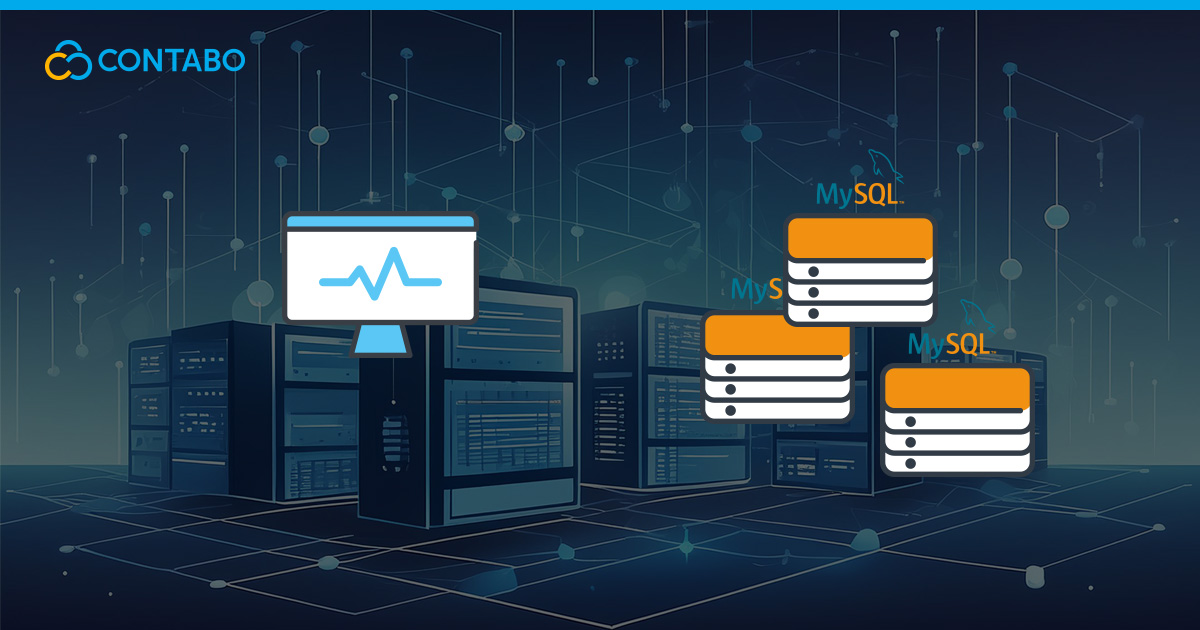
Monitoring MySQL databases is important for maintaining optimal performance and ensuring data integrity. It helps system administrators and developers identify and address issues before they escalate, ensuring smooth and efficient database operations. Effective monitoring involves tracking various performance metrics, analyzing query performance, and keeping an eye on server health indicators. By understanding and implementing robust monitoring practices, you can ensure your MySQL databases perform at their best, minimizing downtime and enhancing user experience.
MySQL Key Metrics to Monitor
Monitoring the right metrics is essential for maintaining MySQL database performance and stability. Here are some critical metrics to keep an eye on:
Performance Metrics
Tracking query performance, including execution time, slow queries, and query throughput, helps pinpoint inefficient queries that need optimization. Monitoring connection statistics such as the number of active connections, aborted connections, and connection errors ensures your database can handle the load effectively.
Server Health Indicators
High CPU usage may indicate inefficient queries or insufficient server resources. Keeping an eye on CPU utilization is important for maintaining optimal performance. Tracking memory usage helps ensure your server has enough resources for smooth operation and can highlight memory leaks or high consumption by specific queries.
Storage Metrics
Monitoring disk I/O and disk space is essential for identifying potential bottlenecks caused by slow storage devices. Keeping track of disk read/write operations and available disk space can prevent the database from running out of storage, which could lead to crashes or performance degradation.
Data Integrity Metrics
Regularly checking MySQL error logs for signs of corruption or other issues can prevent data integrity problems. If you use replication, monitoring the status and lag of replica servers is important to ensure data consistency across your MySQL instances.
Network Metrics
Network latency and network throughput are important for identifying issues that could affect database performance, especially in distributed environments. Monitoring these metrics ensures that the network can meet the demands of your applications.
Recommended Tools for MySQL Monitoring
To start monitoring MySQL databases, you will need the right tools. When choosing a monitoring tool, consider factors such as ease of setup, real-time monitoring capabilities, customizability of dashboards, alerting features, integration options, community support, and cost. Here are some popular options:
MySQL Enterprise Monitor
MySQL Enterprise Monitor, developed by Oracle, is designed specifically for MySQL databases. It provides comprehensive real-time monitoring and performance tuning.
- Developed by Oracle, specifically for MySQL databases.
- Provides real-time monitoring and performance tuning.
- Easy integration with MySQL server.
Nagios
Nagios is a widely-used open-source monitoring tool known for its extensive plugin support. It can monitor various services, including MySQL, and offers customizable alerting and reporting features.
- Open-source monitoring tool with extensive plugin support.
- Capable of monitoring various services, including MySQL.
- Offers customizable alerting and reporting features.
Zabbix
Zabbix is an open-source monitoring solution with a strong community backing. It provides comprehensive dashboards and detailed metrics, supporting the monitoring of multiple servers and services.
- Open-source monitoring solution with a strong community.
- Comprehensive dashboards and detailed metrics.
- Supports monitoring of multiple servers and services.
Datadog
Datadog is a cloud-based monitoring service that offers a wide range of integrations. It provides real-time analytics and customizable dashboards, making it easy to set up with automated discovery of MySQL metrics.
- Cloud-based monitoring service with a wide range of integrations.
- Offers real-time analytics and customizable dashboards.
- Easy to set up with automated discovery of MySQL metrics.
Comparison of MySQL Monitoring Tools
| Feature | MySQL Enterprise Monitor | Nagios | Zabbix | Datadog |
| Type | Proprietary | Open source | Open source | Cloud-based |
| Ease of Setup | Easy | Moderate | Moderate | Easy |
| Real-time Monitoring | Yes | Yes | Yes | Yes |
| Custom Dashboards | Yes | Yes | Yes | Yes |
| Alerting | Yes | Yes | Yes | Yes |
| Integration | MySQL-specific | Wide | Wide | Wide |
| Community Support | Limited | Strong | Strong | Moderate |
| Cost | Paid | Free | Free | Paid |
Best Practices for MySQL Monitoring
To ensure your MySQL databases perform optimally, follow these best practices for monitoring:
Regular Monitoring Routines
Establish a routine for regularly monitoring your MySQL databases. Schedule periodic checks to review performance metrics, server health indicators, and error logs. Consistent monitoring helps you catch potential issues early and maintain database stability.
Analyze and Respond to Metrics
Regularly analyze the collected metrics to identify trends and potential problems. Use this data to make informed decisions about optimizing queries, adjusting resource allocations, and addressing any performance bottlenecks. Quick responses to anomalies can prevent minor issues from escalating.
Maintain Optimal Performance
Implement maintenance tasks such as indexing, query optimization, and regular updates. Keep your database server and monitoring tools up to date to benefit from the latest features and security patches. Document your monitoring procedures and ensure your team is trained to follow them.
Conclusion
Effective monitoring of MySQL databases is important for maintaining their performance, reliability, and overall health. By using the right tools, such as MySQL Enterprise Monitor, Nagios, Zabbix, and Datadog, you can gain valuable insights into your database operations. Tracking key metrics like query performance, server health indicators, storage usage, data integrity, and network performance helps you identify and resolve issues before they impact your users.
Following best practices, including regular monitoring routines, analyzing, and responding to metrics, and maintaining optimal performance through indexing and updates, ensures your databases run efficiently. Proactive monitoring not only prevents potential problems but also enables you to optimize your resources and improve the user experience.
In summary, consistent, and thorough MySQL monitoring is essential for ensuring your databases are always performing at their best, minimizing downtime, and enhancing the overall efficiency of your applications. Implement these practices to keep your databases robust, secure, and responsive.
